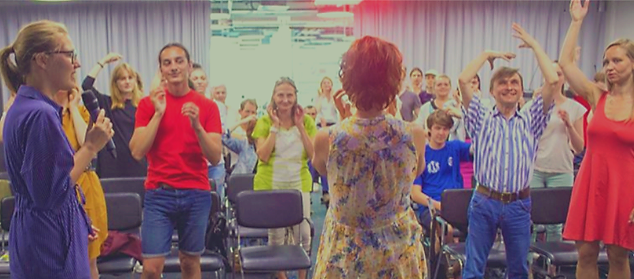Dance classes and workshops for individuals and groups in healthcare, education and corporate settings that leave participants feeling happier, stronger, smarter, and inspired to get back to life and work.

Caregiver Training | Healthcare Professionals | Family and Therapists | Arts Educators
Caregiver training, workshops and classes are available for healthcare workers to help patients heal faster and with less pain. Learn simple movement techniques appropriate for healthcare settings with modifications for those with neurocognitive, sensory and physical limitations.

Workshops for Educators | Elementary through College | In-class participatory forums
Students learn better and retain more when their bodies are involved physically and when lessons include participation. Classes and workshops are available to enhance education curriculums through movement, spoken word, storytelling, theatre, and discussion.

Meeting Facilitation | Retreats | Workshops | Employee Training
Meeting facilitation and enhancement through movement and participation for businesses looking to provide opportunities for employees to feel happier, stronger, smarter, inspired, connected, and excited to get back to work.

Free Inclusive Dance Webinar: Rhythmic Body Percussion
Join us for our free inclusive dance webinar. On November 14 at noon EST, I'll be showing how body percussion wakes up our skin, muscles, and bones. Body Percussion can be as simple or complex as you'd like and it's incredibly effective and valuable at helping people...
read moreFederal Arts Research Grant Awarded for Inclusive Arts Integration
I’m honored to announce that BodyWise Dance and MVLE are receiving a $15,000 Federal Arts Research Grant from National Endowment for the Arts to assess the impact of our inclusive arts integration project, MVLE Moves. BodyWise Dance is thrilled that this partnership...
read moreOn my way to Russia
Post by Margot Greenlee: I'm delighted to share some GOOD news about US-Russia relations. I'm soon on my way to Moscow and Yekaterinburg to lead dance workshops and rehearsals and presenting presentations about best-practices in inclusive performing arts, all the...
read more